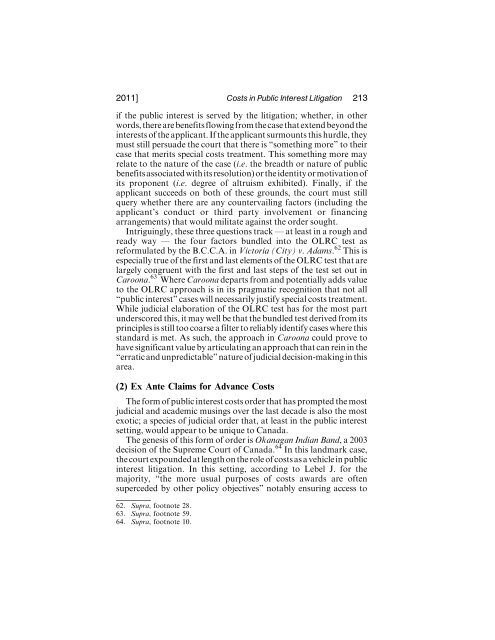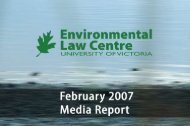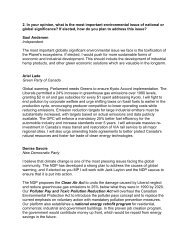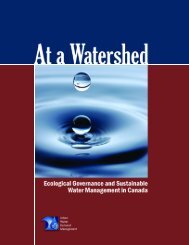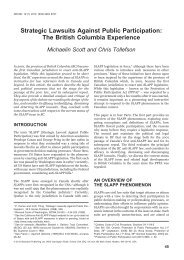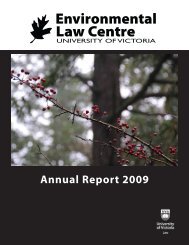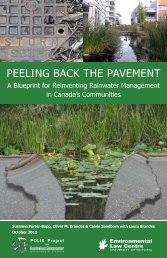COSTS IN PUBLIC INTEREST LITIGATION REVISITED ...
COSTS IN PUBLIC INTEREST LITIGATION REVISITED ...
COSTS IN PUBLIC INTEREST LITIGATION REVISITED ...
You also want an ePaper? Increase the reach of your titles
YUMPU automatically turns print PDFs into web optimized ePapers that Google loves.
2011] Costs in Public Interest Litigation 213if the public interest is served by the litigation; whether, in otherwords,there arebenefitsflowingfromthecase thatextendbeyondtheinterests of the applicant. If the applicant surmounts this hurdle, theymust still persuade the court that there is “something more” to theircase that merits special costs treatment. This something more mayrelate to the nature of the case (i.e. the breadth or nature of publicbenefitsassociatedwithitsresolution)ortheidentityormotivationofits proponent (i.e. degree of altruism exhibited). Finally, if theapplicant succeeds on both of these grounds, the court must stillquery whether there are any countervailing factors (including theapplicant’s conduct or third party involvement or financingarrangements) that would militate against the order sought.Intriguingly, these three questions track — at least in a rough andready way — the four factors bundled into the OLRC test asreformulated by the B.C.C.A. in Victoria (City) v. Adams. 62 This isespecially true of the first and last elements of the OLRC test that arelargely congruent with the first and last steps of the test set out inCaroona. 63 Where Caroona departs from and potentially adds valueto the OLRC approach is in its pragmatic recognition that not all“public interest” cases will necessarily justify special costs treatment.While judicial elaboration of the OLRC test has for the most partunderscored this, it may well be that the bundled test derived from itsprinciples is still too coarse a filter to reliably identify cases where thisstandard is met. As such, the approach in Caroona could prove tohave significant value by articulating an approach that can rein in the“erratic and unpredictable” nature of judicial decision-making in thisarea.(2) Ex Ante Claims for Advance CostsThe form of public interest costs order that has prompted the mostjudicial and academic musings over the last decade is also the mostexotic; a species of judicial order that, at least in the public interestsetting, would appear to be unique to Canada.The genesis of this form of order is Okanagan Indian Band, a 2003decision of the Supreme Court of Canada. 64 In this landmark case,the court expounded at length on the role of costsas a vehiclein publicinterest litigation. In this setting, according to Lebel J. for themajority, “the more usual purposes of costs awards are oftensuperceded by other policy objectives” notably ensuring access to62. Supra, footnote 28.63. Supra, footnote 59.64. Supra, footnote 10.


